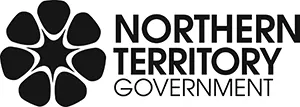Sandy Flat Mine remediation
Several studies have been done at the Sandy Flat Mine site.
These include all of the below.
Completed works
See completed works below.
2014
- Groundwater investigation - a hydrogeological drilling program including the installation of extra groundwater wells to investigate the:
- groundwater conditions at the site
- mechanisms for contaminant transport.
- Site telemetry installation - including weather station and groundwater monitoring equipment.
2016
- Hazardous material survey - to identify any hazardous materials including asbestos that need to be managed during any remediation activities.
2017
- Site fencing - installation of a stock fence to restrict stock access to potentially contaminated materials.
- Bathymetric survey - a detailed survey of the flooded pit to collect accurate high-resolution data, including calculating the volume of the pit.
2018
- Fish survey - instigated by concerns from the Traditional Owners about potential impacts to human health from eating fish downstream from the site.
2020
- Independent review and gap analysis - consolidation of existing information and identification of knowledge gaps.
- This also proposed a work plan to address the identified gaps to develop an appropriate remediation plan.
- Mine waste characterisation and material assessment - an understanding of the waste material at the site, including the primary source of contamination and the associated volumes had been identified as a key knowledge gap.
- This assessment was designed to address this and inform future remediation planning through a better understanding of the waste at the site.
- Lidar survey - to develop an accurate 3D model of the site.
- This provides critical information about material volumes and is an input for any future engineering design work.
- Wet season site inspection - the site is not easily accessible during the wet season.
- A wet season inspection was undertaken via a helicopter in early 2020 to:
- measure the groundwater levels
- measure the stream flow rates
- inspect seepage from the site.
- This added valuable information to our understanding of site conditions.
- A wet season inspection was undertaken via a helicopter in early 2020 to:
2021
- Site telemetry review and maintenance - review and maintenance of the site telemetry including:
- weather station equipment
- groundwater monitoring equipment.
- Additional mine waste characterisation - some areas of further work were identified from the waste characterisation work.
- This was to further delineate the waste at the site.
- Conceptual remediation plan - this plan was developed to facilitate discussion about potential remediation options.
2022
- Cultural heritage - an assessment will be used to identify areas of cultural heritage that much be avoided or managed during remediation.
Current works
- Conceptual hydrogeological model and water load balance model - the model represents the current conditions at the site and how contaminants are moving to the receiving environment:
- an understanding of where the contamination is coming from and how it is moving is critical to developing a robust remediation plan.
- Aquatic biota and sediment assessment - a tender for aquatic biota and sediment assessment has been awarded and the fieldwork is proposed to be undertaken when site access is possible after the wet season:
- this assessment will provide a baseline condition of the downstream environment and this information will be used to demonstrate improvements post-remediation.
- Drilling program - a program of drilling to finalise the waster characterisation and install more groundwater wells is proposed for the 2022 dry season:
- procurement for this has commenced.
Proposed works
- Development of a transient flow and transport model - this model will be used to simulate current conditions, conditions during remediation and post-remediation conditions:
- this package of works will be used to model the expected improvements to the receiving environment based on the proposed remediation approach.
- Remediation options assessment - to assess the potential remediation options and the benefits and risks associated with different options:
- this is a critical piece of work in justifying the selection of a remediation approach and next work to develop detailed plans.
- Geotechnical assessment of the pit - an assessment of the geotechnical stability of the pit will be required before assessing the feasibility of backfilling the pit.
- Engineering design - once a preferred remediation option is determined, detailed engineering design can begin.
- Water treatment assessment - an assessment of the potential options for water treatment will be required, including consideration of feasibility trials.
Contact
For more information, email legacy.mines@nt.gov.au.
